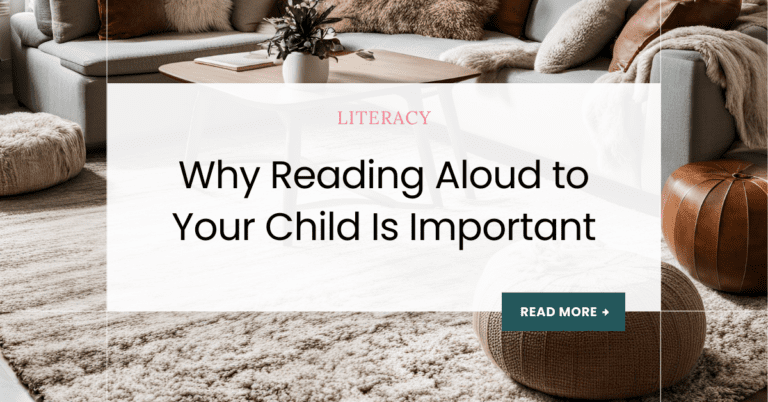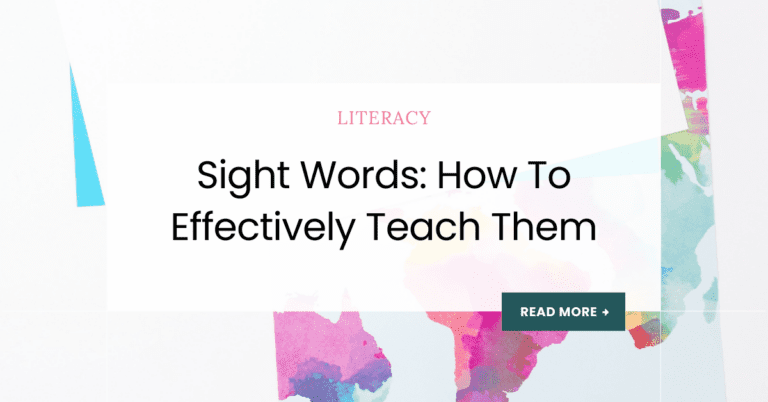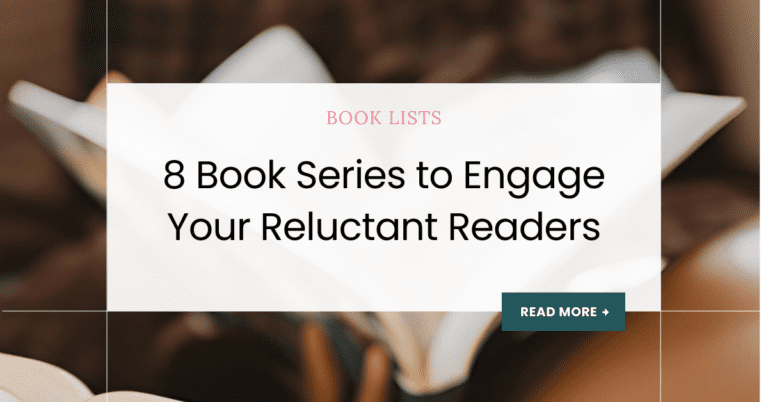Reading comprehension for beginning writers can feel tricky. As early readers move beyond simple books and begin reading chapter books, comprehension becomes more of a focus.
However, sometimes a student’s reading level surpasses their writing ability! And… to make it even trickier, many comprehension resources are meant for independent writers and kids who can already write formal sentences.
That’s tough when your students are reading at a chapter book level but still writing at a kindergarten level or below.
So, how do we help boost reading comprehension for those early readers or struggling writers? Read on to see my top recommendations to help your struggling writers!
Table of Contents
Why Reading Comprehension Does NOT Need To Be Writing-Heavy
Many chapter book reading comprehension resources are very writing-heavy. And, for most kids, that’s ok! By the time they can read chapter books, they’re able to also write fairly independently.
But, truthfully, reading comprehension needs to assess how well kids understood the story that they read. And, that can — but does not HAVE TO — include writing!
There are MANY ways to assess how well a student understands a story.
Who Are Struggling Writers?
Struggling writers are students whose writing ability is below what would be expected for their grade.
Writing is a HARD skill to learn. Students need to have a firm grasp of oral language before they are able to encode (or write!) the sounds they know to form words.
I would argue that many students are considered “struggling” when they are truly just not developmentally ready for longer writing passages.
How Does This Affect Reading Comprehension?
Writing-heavy comprehension resources are not a good fit for beginning writers who need to be assessed in their comprehension skills but are still struggling with writing simple sentences!
The writing process is so arduous for them that they aren’t able to sufficiently explain the concepts they did comprehend from the book. For them, writing is a huge chore.
Using writing-heavy comprehension resources doesn’t help them show what they comprehended from the story as much as it helps to build their writing skills.
Beginning readers often already feel intimidated by chapter books! They are still learning how to properly decode longer words. It’s a big jump to move up to those books, and sometimes the comprehension questions are harder to read than the text itself!
How To Support Beginning or Struggling Writers
Those kiddos need differentiated comprehension activities that still assess their understanding of the story they read but also accommodate their early reading and writing skills.
This can look like MANY different things, depending on your curriculum, class structure, and the level of support you can offer.
- Oral retellings of the story
- Peer sharing
- Drawing a picture of specific parts of the story
- Creating a visual representation of the story (a model, diorama, etc)
- Utilizing shorter comprehension questions such as true/false or multiple choice, rather than long written responses
It’s important to remember that struggling writers often need more specific writing interventions as well.
They need small, specific, buildable writing practice that boosts their confidence, prevents fatigue, and helps them fall in love with the composition process.
Components Of Solid Reading Comprehension
For differentiated reading comprehension, we want to focus on the main components of comprehension and allow our students to express their knowledge in different ways.
Reading comprehension needs to include several components:
- Understanding the main characters and supporting characters
- Identifying the story setting
- Identifying the problem the characters faced
- Identifying the solution they used to fix the problem
- Understanding the main plot of the story, along with the themes
- Identifying and learning new vocabulary words and their meanings
- Predicting what might happen next
- Inferring what happened based on word clues or other details
- Answering direct questions from the story
Components of Reading Comprehension Assessment
To assess if students understand the text, we need to directly assess how much they can recall, retell, and understand.
Traditionally, this has been done by students reading a comprehension question, then supplying a written answer.
However, for our little learners who aren’t strong readers and writers… this proves challenging! This is especially true if…
- A student is struggling with BOTH reading and writing but are too old for the beginning reader books
- You plan to assess comprehension for a resource that was used in a different format (ie. an audiobook or read-aloud)
- You are doing a whole-class activity involving a chapter book and want to use the same book with all your students
How To Differentiate Reading Comprehension
Differentiated reading comprehension changes the process by which students communicate the information to us!
Simply by changing the requirements from written response to another method, we can help them communicate their understanding to us in a new way.
This can look like:
- Using picture clues for new vocabulary words
- Using multiple-choice comprehension questions, rather than a written response
- Drawing the characters, plot, or another story component
- Cut-and-paste pictures or phrases together to show the complete story in order
- Oral retelling or answering of questions
- Using audiobooks to help boost early chapter book comprehension, rather than relying on printed books
- Using less formal assessments and more informal assessments so students feel more engaged and less like they need to ‘pass the test’
- Giving students the opportunity to share with others who also read the book to talk about what they enjoyed
- Doing crafts or activities based on the book
How to Implement Differentiated Reading Comprehension
The easiest way to work reading comprehension for beginning writers into your instruction is by using guided reading groups. These readers and writers need specific, teacher-led instruction so they can successfully gain the skills they need.
You can also implement oral retellings in a whole-class question and response activity.
Independent comprehension work is a wonderful option! Make sure that the independent work you provide is at a level that your earlier readers and writers can handle.
Audiobooks are wonderful to provide students, especially when they are slightly above the student’s reading level. They are powerful tools to help boost engagement and comprehension. They also help prepare early readers to read longer texts after getting familiar with the story and vocabulary.
Resources for You
If you’re nodding your head and saying “YES, my little readers need this!” then you’re in the right place! This is exactly how my Differentiated Reading Comprehension Activities for the Magic Tree House books are designed!
My son LOVES the Magic Tree House books, but really struggled with reading and writing early on. He was bored of early books, but chapter books were still beyond his reading ability.
I looked for some comprehension activities that would help him, but everything I found was too hard and required too much writing. So, I created these and he LOVES them!
Each chapter has a simple-to-use worksheet that provides comprehension questions early readers can understand. Plus, it includes 3 vocabulary words + picture clues!
This allows students to learn words like, “glinted,” “leaped,” and “confused” while helping them comprehend the word with a visual.
There is some writing space, but the focus is on letting the student draw their response. This helps them show what they know, boosts their engagement with the activity, and gives them some fine motor practice without doing extensive writing.
Plus, I’ve created differentiated options to help assess plot awareness, story sequencing, and vocabulary!
Remember those picture clues? There are vocabulary sheets that have the same words + pictures that students can match! Plus, there are vocabulary sheets with the words and written definitions so you can assess vocabulary in 2 different ways.
Head here to try a FREE set of these fun activities! Use them to help take the stress out of planning your differentiated reading comprehension guided reading centers!
Why Focus On Reading Comprehension for Beginning Writers
Over time, by focusing on reading comprehension for beginning writers, their skills will strengthen and they will be ready for longer written responses! There is a lot you can do to boost reading comprehension for beginning writers! It just takes some time, patience, and willingness to adapt to what they need in a new way!
By focusing on their reading comprehension, you help bridge gaps between their reading and writing skills. This helps prepare them for more rigorous writing tasks, along with helping them stay on grade level with their reading material.
If you enjoyed the free activities, head to my online shop to grab full sets of comprehension activities for Books 1-5 of the Magic Tree House series!







